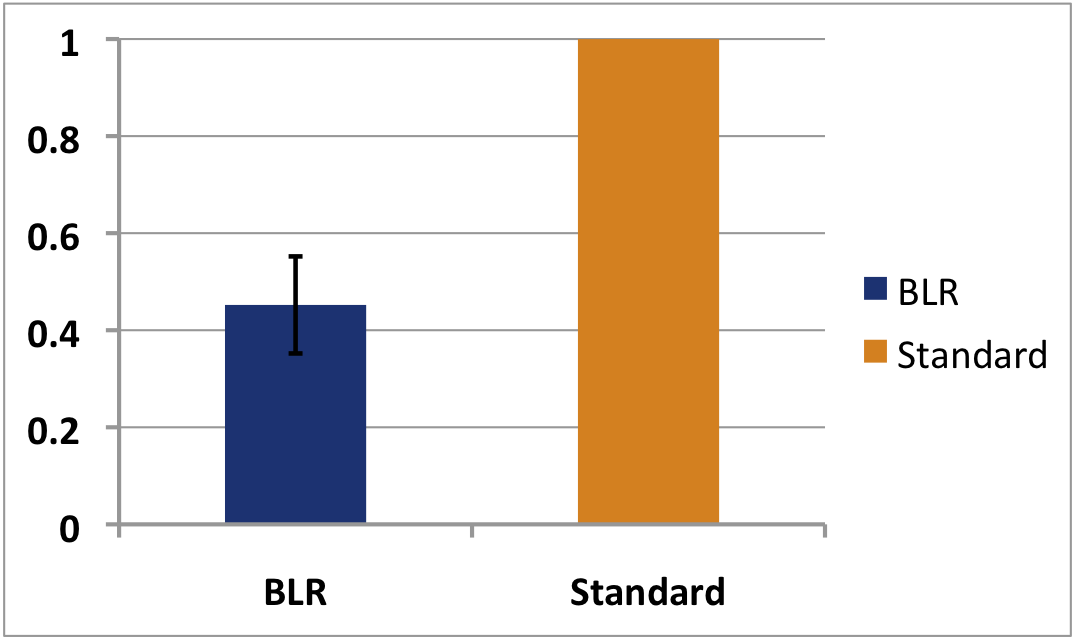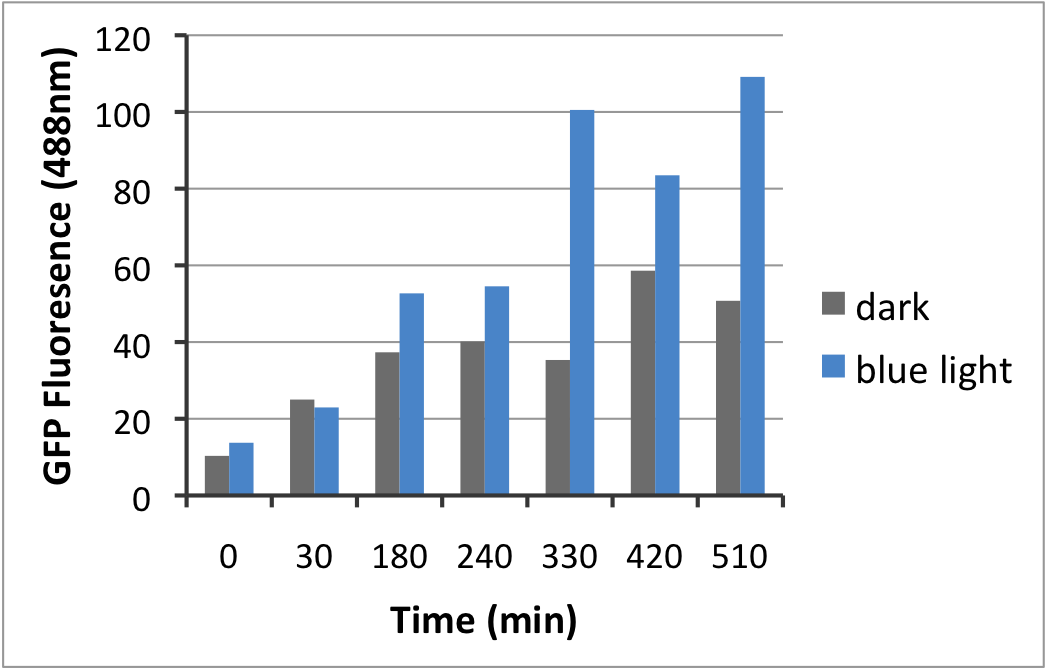Team:KULeuven/Project Results
From 2009.igem.org
JochemDeen (Talk | contribs) (→Project Results) |
(→Project Results) |
||
| Line 24: | Line 24: | ||
|{{kulpart|K238011}} ||VirB | |{{kulpart|K238011}} ||VirB | ||
|- align="justify" | |- align="justify" | ||
| - | |{{kulpart|K238013}} ||Blue light | + | |{{kulpart|K238013}} ||Blue light promoter |
|- align="justify" | |- align="justify" | ||
|{{kulpart|K238014}} ||Ech+fcs | |{{kulpart|K238014}} ||Ech+fcs | ||
| Line 54: | Line 54: | ||
| - | Furthermore, the blue light | + | Furthermore, the blue light promotor was extensively characterized. The strength of the promoter was compared to the standard iGEM promoter, {{kulpart|I20260}}, using the protocol from the iGEM measurement kit. |
{| | {| | ||
| Line 60: | Line 60: | ||
|} | |} | ||
| - | + | Next, the effect of blue light on this promoter was examined. | |
| - | + | As this graph shows, blue light does have a significant effect on the promoter. However, aside from light, temperature is a very important influence (if not a bigger one). For instance, when working in low copy plasmids, temperature will influence the promoter/repressor ratio. Cells grown at 37°C will have too much effect on the promoter, resulting in constitutive activity. At 16°C, there will be more repressor and receptor influence, but the low temperature will put the receptor in its active state thus inhibiting the repressor from doing its job. When grown at 25°C the ratio is better and the receptor/represssor are still in there ground state leading to a good repression of the promoter. | |
{| | {| | ||
| Line 67: | Line 67: | ||
|} | |} | ||
| - | + | Our experimental set-up: | |
| - | + | Liquid cultures were ented (and re-ented in the evening) and grown on two different temperatures: 37° and 25°C. | |
| - | + | From each of these growth conditions some of the cultures were put in 16° and the other at 25°C. Each of these groups were then again divided in a group that was lit with blue light and a group that wasn't. | |
| - | + | Measurements were done at following hours: 0h;0,5h;1,5h;3h;4,5h;6h;8h. | |
| - | + | This was done for our ligation of blp with GFP in three different vectors (pSB3K3, pBR322 and pSB1A2). | |
| - | + | An example of a sample name is: 37/16/NB/LigA, grown at 37°, put in 16°, not lit and in vector pSB1A2. | |
| - | + | Note: enting of the cultures needs to be done in a dark room (red light)and it might be best to use medium that was put at 4°C overnight. | |
| - | + | This experiment was repeated some times and variations were done: | |
only growing cultures on 25°C and lighting them at room temperature | only growing cultures on 25°C and lighting them at room temperature | ||
Revision as of 06:42, 20 October 2009
Project Results
Our Results can be roughly divided in two sections, the biobrick assembly from starting parts in order to create our (test)-devices and secondly the characterizations of a part.
First and foremost we succesfully assembled the following biobricks and sent them to the registry:
| Partnumber | Description |
|---|---|
| Antisense key | |
| Sam5 + rbs | |
| virA | |
| VirG | |
| VirB | |
| Blue light promoter | |
| Ech+fcs | |
| Blp + GFP | |
| Blp + RFP | |
| Ech + Fcs + terminator | |
| Promotor+ Ech + FCS + terminator | |
| Sam8 +Sam8 | |
| Sam8 + Sam5 + promoter | |
| Sam8+ Sam5 + promoter + comt | |
| Promotor + Sam8 + Sam5 + comt + terminator | |
| lock | |
| Sam8 + RBS | |
| Ech + rbs | |
| Fcs + rbs |
Furthermore, the blue light promotor was extensively characterized. The strength of the promoter was compared to the standard iGEM promoter, , using the protocol from the iGEM measurement kit.
Next, the effect of blue light on this promoter was examined. As this graph shows, blue light does have a significant effect on the promoter. However, aside from light, temperature is a very important influence (if not a bigger one). For instance, when working in low copy plasmids, temperature will influence the promoter/repressor ratio. Cells grown at 37°C will have too much effect on the promoter, resulting in constitutive activity. At 16°C, there will be more repressor and receptor influence, but the low temperature will put the receptor in its active state thus inhibiting the repressor from doing its job. When grown at 25°C the ratio is better and the receptor/represssor are still in there ground state leading to a good repression of the promoter.
Our experimental set-up:
Liquid cultures were ented (and re-ented in the evening) and grown on two different temperatures: 37° and 25°C. From each of these growth conditions some of the cultures were put in 16° and the other at 25°C. Each of these groups were then again divided in a group that was lit with blue light and a group that wasn't. Measurements were done at following hours: 0h;0,5h;1,5h;3h;4,5h;6h;8h. This was done for our ligation of blp with GFP in three different vectors (pSB3K3, pBR322 and pSB1A2). An example of a sample name is: 37/16/NB/LigA, grown at 37°, put in 16°, not lit and in vector pSB1A2. Note: enting of the cultures needs to be done in a dark room (red light)and it might be best to use medium that was put at 4°C overnight.
This experiment was repeated some times and variations were done: only growing cultures on 25°C and lighting them at room temperature
 "
"









